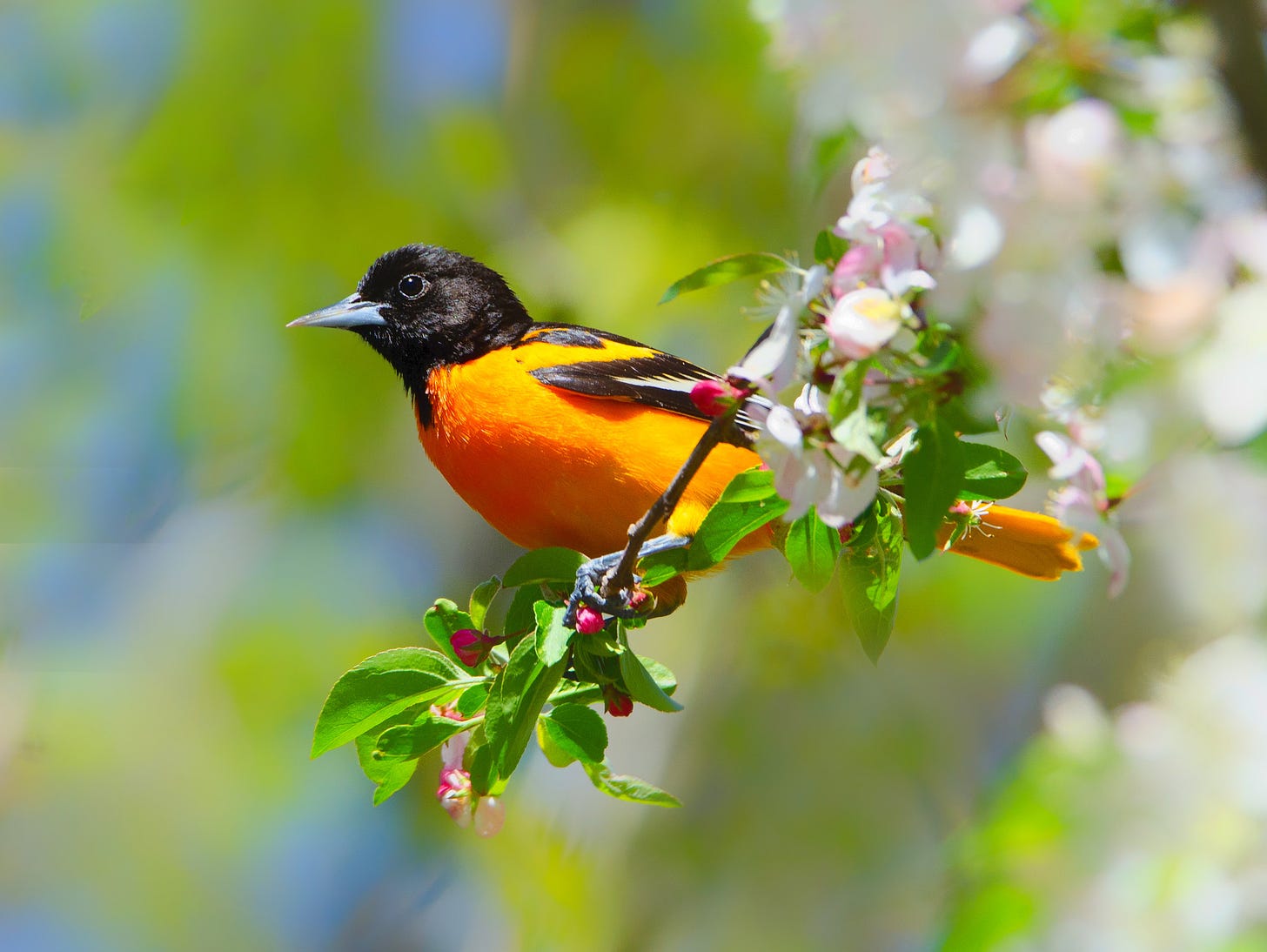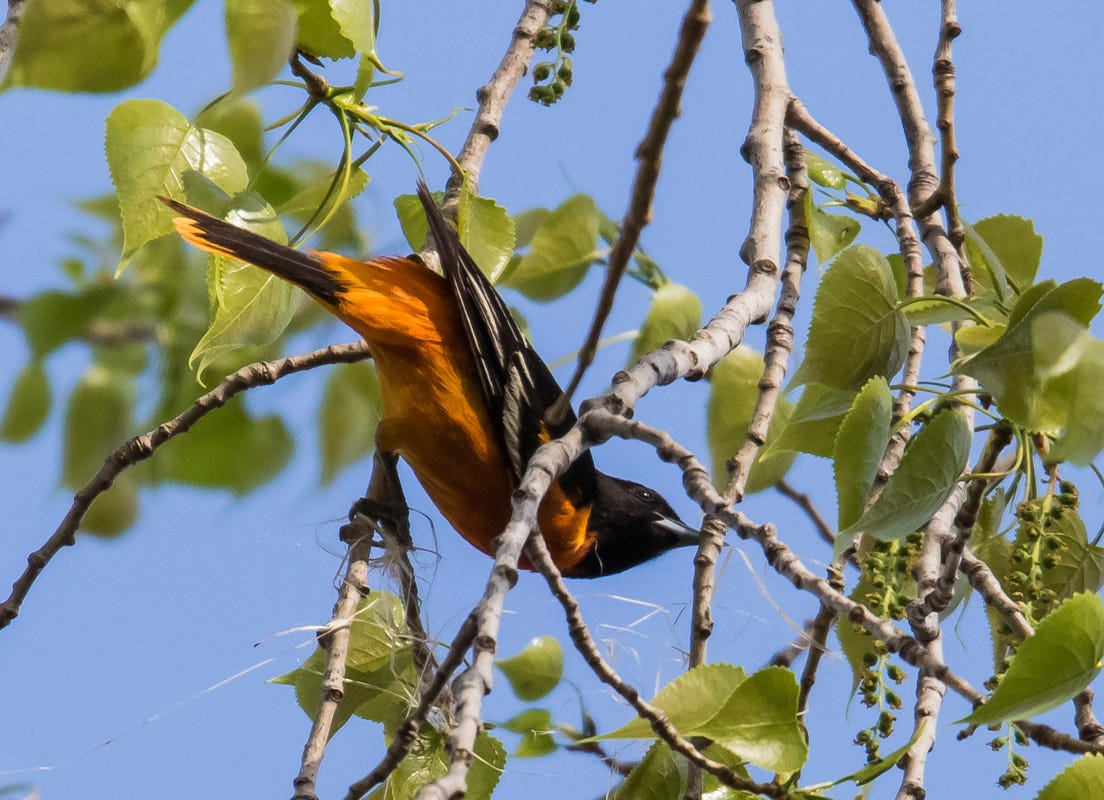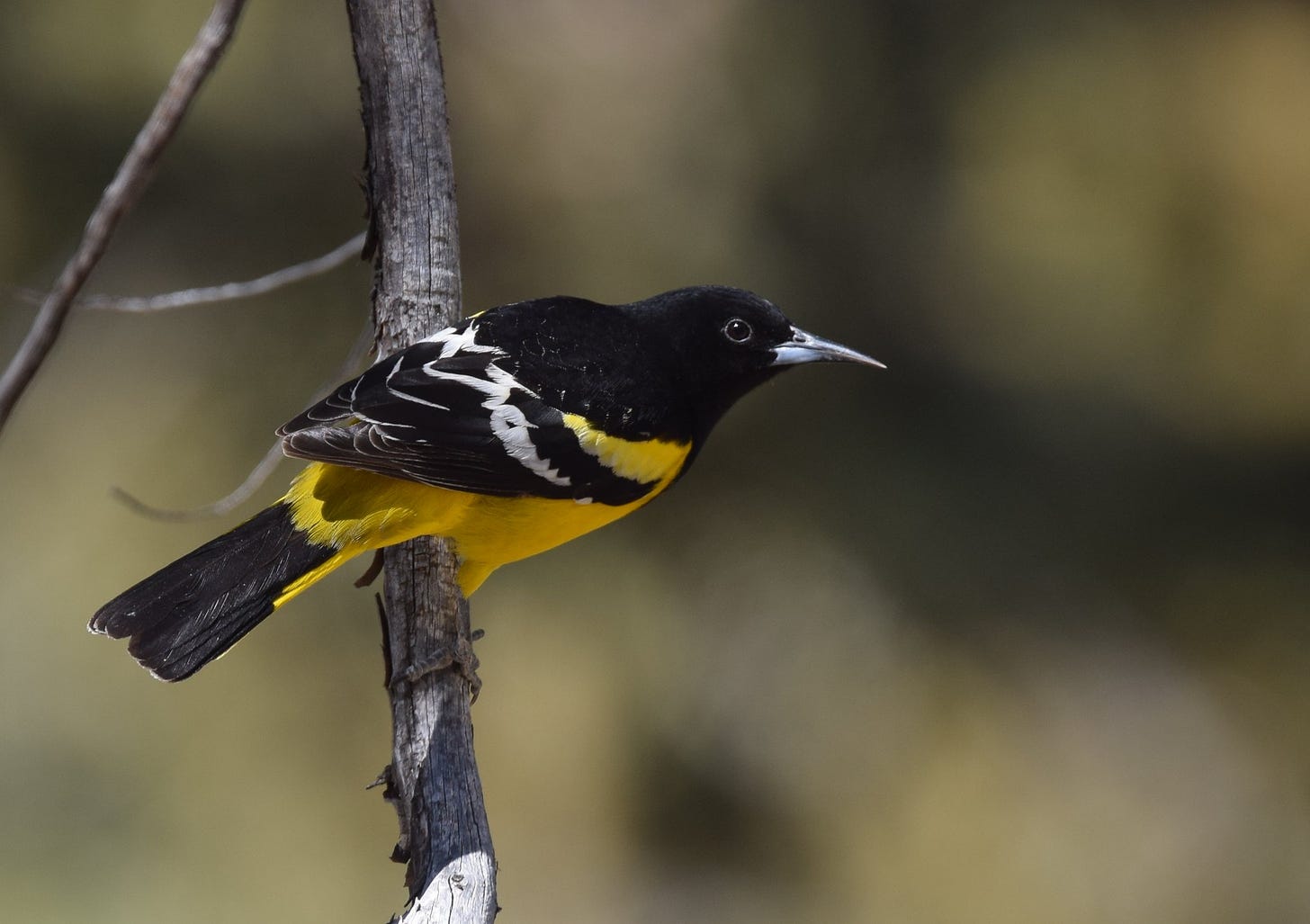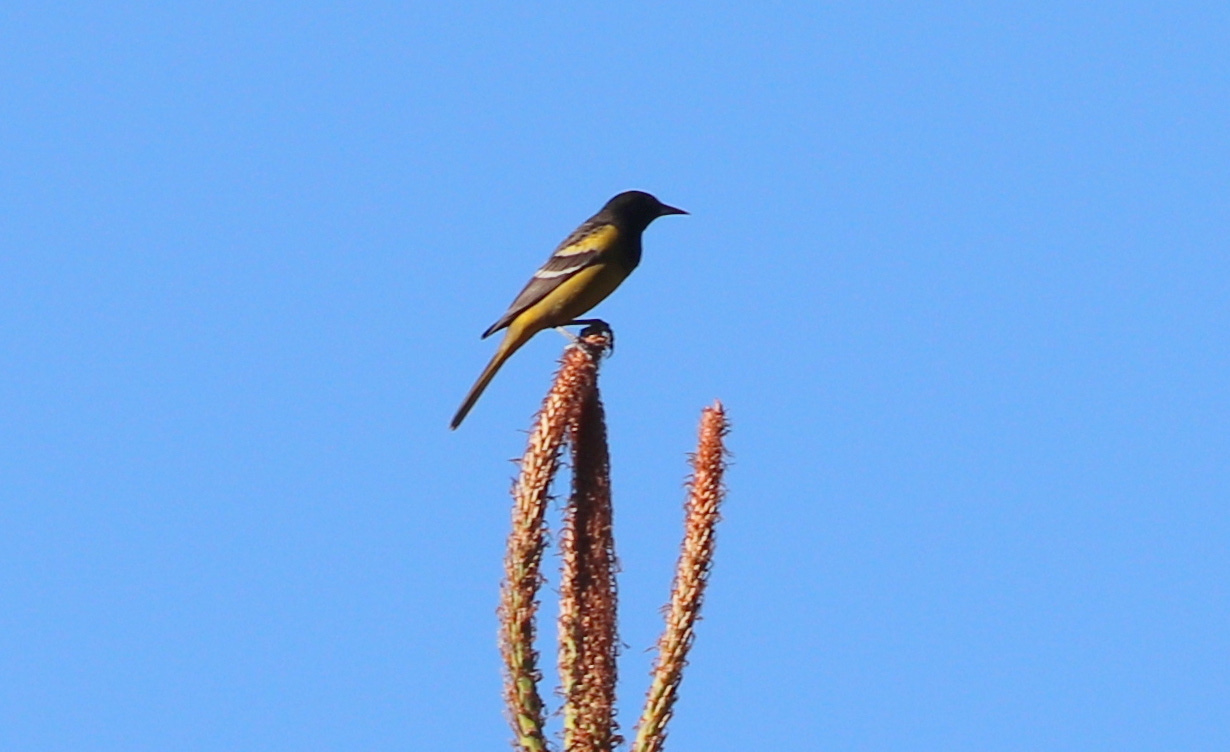We’ve got a big event in this edition of Bird of the Week: our very first bird-off!
That’s right: we are going to pit two birds head to head (or, more appropriately, wing to wing) and at the end of this post, we are going to exclusively reveal which is the top bird. Two birds fly in, but only one can win! Let’s gooooooooooooooooooooo!
This has all come about because of our recent call for readers to submit their own favorite birds for BOTW consideration. Something interesting happened: two readers each hyped up a variety of the same bird: the oriole! What are the chances?
The first bit of oriole love came from Matt B, who laid out this impressive case for the one, the only, Baltimore oriole. I’m just going to quote Matt in full:
Oh baby, being a Marylander, I must sing the praises of the beautiful Baltimore Oriole.
First off: look at those contrasting colors. Black and Orange just pop, and the streaks of white just light it on fire.
Second: they are nectar and fruit eaters (and opportunistic omnivores), which rules.
Third: Migratory, so you can catch them in the Caribbean in the winter, and across the Eastern US up to Canada when they are breeding.
Fourth: The only good realistic bird logo.
https://images.app.goo.gl/MW88QwEwHQP88XBX6 <That is hot.
https://images.app.goo.gl/PrHjRoyPNzCfRR3BA < Cool bird, garbage logo.
https://images.app.goo.gl/roKs2TKNvFSjhdMB7 < Cool bird, garbage logo.
Fifth: The only good cartoon logo.
https://images.app.goo.gl/ER9iRsu5QPkyt69n6
A cartoon logo so good, it can stand in for any other cartoon logo as well:
https://twitter.com/smilingbirdlogo?lang=en
Finally, it's so pretty. Fin.
Wow! This is one of the most beautiful odes to a bird I have ever read, and it’s backed up by academic-level scholarship! Say no more, I’m convinced.
Or AM I???? Because hot on Matt’s heels came reader Defective Dynast, with this submission:
I have to recommend the oriole I share a name and region with: the Scott's oriole!
OK, much to think about here. At first glance, Defective Dynast’s entry might seem a little more feeble than Matt’s. Surely, you could be thinking, the Scott’s oriole can’t have all that much going on if it doesn’t inspire the lengthy reveries that the Baltimore oriole inspired??? Maybe this contest is wrapped up before it began!
Ah, but let me throw this idea at you: what if the Scott’s oriole is so obviously wonderful, such a crystal-clear miracle of worldly existence, that the mere utterance of its name is all that is needed to land it at the top of any bird ranking! What if saying “Scott’s oriole” is like dropping a reference to Mamma Mia 2 in the Discourse Blog chat: an instantly recognized shorthand for greatness that requires no elaboration whatsoever?
Boy, this is a tough one. We have no choice but to go to the tape. Let’s examine these two orioles side by side.
First up….the Baltimore oriole!
I mean…the brilliance cannot be overstated here. That combination of orange and black is beyond iconic—it’s almost mythical. Can you imagine what people must have said to each other when they first saw a bird that looked like this in the wild???
As Matt B said, Baltimore orioles can be found all over the place in the eastern part of the United States. They travel up and down the country and venture as far north as Canada and as far south as South America. And who doesn’t love seeing a Baltimore oriole in the wild?
Of course, though Baltimore orioles can be found across a vast range of territory, they are most closely associated with Maryland. It gets its name from its resemblance to the heraldic coat of arms of Lord Baltimore, who governed Maryland and who seems, inasmuch as a disgusting colonist can be, like he wasn’t the absolute worst (his children, on the other hand, sound like real scum).
There’s so much love for the oriole in Maryland that the state government passed laws to protect it all the way back in 1882, and made it the state bird in 1947. In 2021, it had the honor of being ranked 18th on Caitlin’s state birds list. I think they also represent some sports team in the Maryland area?
Two other fun facts about the Baltimore oriole: they have a major sweet tooth (they love grape jelly, apparently, and orange slices—are they a nine-year-old at a soccer game?—and even pound cake!) and they build eye-popping, elaborate nests, much like weavers. Here’s a peek:
You also caught a glimpse there of the beautiful song of the Baltimore oriole. Here’s more!
Ah, wonderful. OK, this bird is definitely it.
OR IS IT???????????
Because in this corner, warming up, we have the SCOTT’S ORIOLE.
BOOM. The Scott’s oriole is like “I see your orange and black, Baltimore oriole, and I raise you this equally stunning yellow and black combo!” The crispness, the elegance, the confidence I’m seeing here: A++++!
Holy smokes. This bird is positively regal. What’s not to love? Unlike its Baltimore counterpart, the Scott’s oriole mostly makes its home in the Southwest, stretching from Southern California through Arizona into parts of Texas and down into Baja California and much of northern Mexico. Look at this pic:
Hardcore!!! I certainly could not do that, could you? The Scott’s oriole loves desert plants like agave and especially the yucca which it uses for feeding (it gets insects on the plant and also feasts on yucca nectar) and to build its own beautiful nests, along with materials like cotton and even hair. Here’s a mother oriole feeding her babies in an incredible nest perched in a palm tree!
The Scott’s oriole was named after Winfield Scott, a very prominent 19th-century general. Scott was anti-slavery, but he was also quite pro-Cherokee-removal and pro-Mexico-colonizing, so I’ll say that on balance it’s not the most thrilling namesake. However, the Scott’s oriole was not named after anyone who inspired the Maryland flag, so that’s a point in its favor.
Like the Baltimore oriole, Scott’s orioles love sweet things like orange halves, and they especially love to sing. A Scott’s oriole will be out here before sunrise (is this the Ethan Hawke of birds?? Discuss!) trilling its trill, and it won’t let up for the whole day. Here’s a little taste:
So there are your two contenders. Two storied, stunning birds. But there can only be one victor.
It now falls to me to say which one is still in the running towards becoming America’s Next Top Oriole. This is VERY difficult, but I’m not in this business to do the easy things.
OK, deep breath. The winning oriole is…………..reality show pause….
………………..
……………………………………..
……………………………………………………………………………………
IT’S A TIE! !!!!! !!!!!! THEY BOTH WIN!!!!!!!!!!!!!!!!!!
What, you thought I was really going to say that one oriole was better than another oriole? This is Bird of the Week!!!! We love all birds, especially when they are as glorious as these two. There is no greater honor than to be on the planet in the company of such immortal creatures.
My thanks to Matt B and Defective Dynast for suggesting these two marvels of the universe for Bird of the Week, and my thanks to all of you for coming with me on this journey. All hail the oriole!!!! Until next time….











Sneaking in a MD flag dig again, I see. We're watching, Jack.
Cedric Mullins is the Best Oriole. Currently.